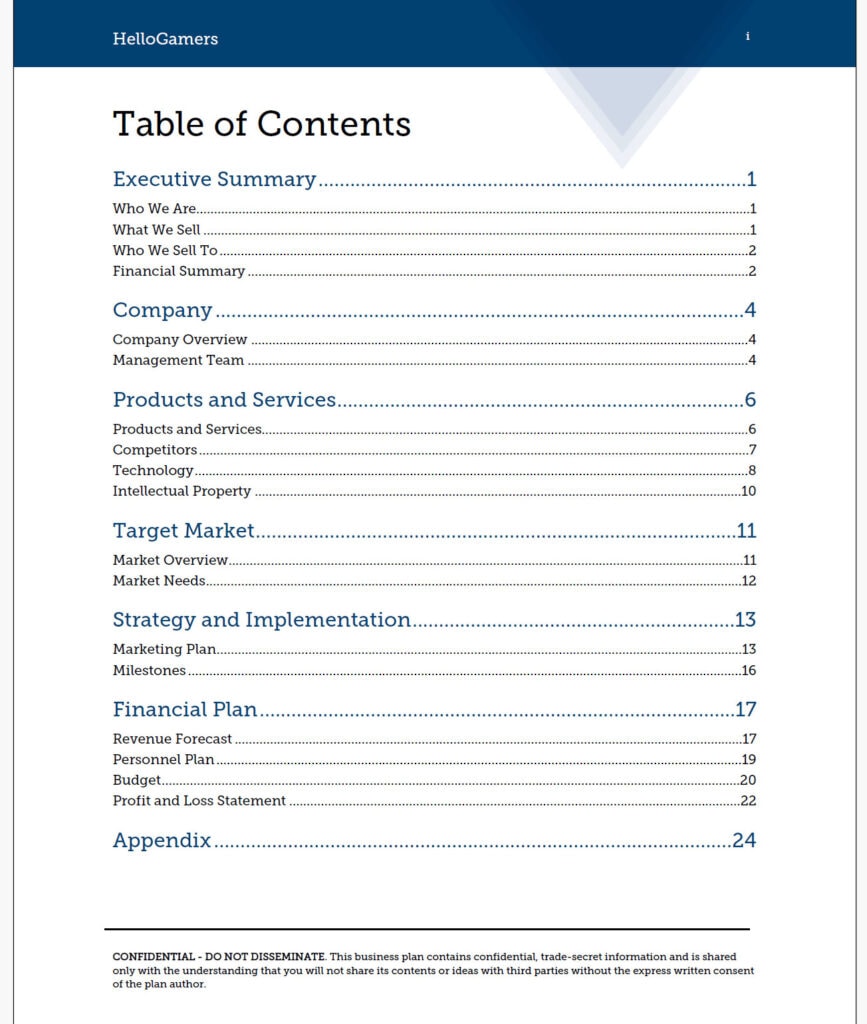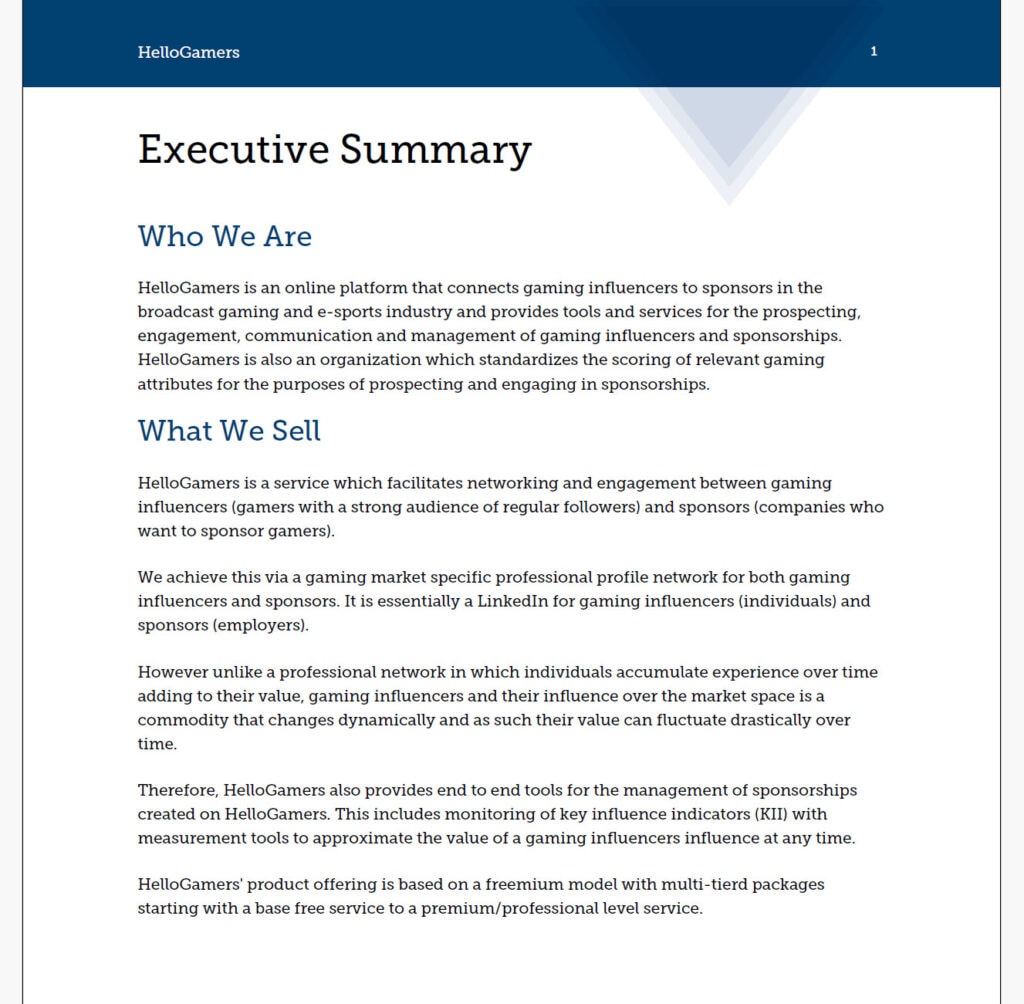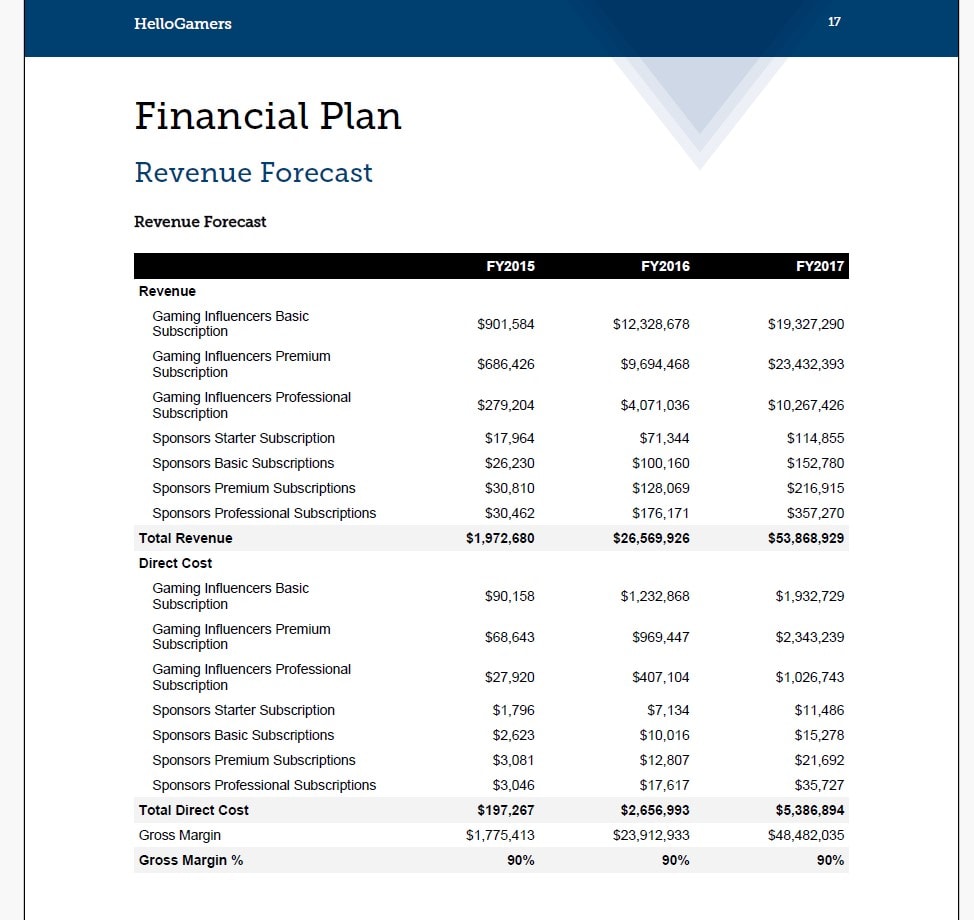How to Craft a Successful Business Plan: Comprehensive Guide
Imagine turning your business idea into a thriving reality by crafting a comprehensive and compelling business plan!
Take it from me: having been one of the winners of the Live Plan $10,000 Boost Business Plan Competition in 2012 and 2013, I know how this powerful tool can be to your success, secure funding, and attract investors. My 2013 business plan was one of the critical parts that got me a chance to interview for the Winter Class of Y-Combinator in 2014.
So, are you ready to unlock the potential of your business? In the following article, we’ll review the essential steps for creating a successful business plan and help you discover the secrets to making your vision a reality.
Key Takeaways (TLDR)
- Crafting a successful business plan is essential for securing funds and achieving long-term success.
- Key components of an effective plan include an executive summary, concept viability analysis, market research, and competitive environment assessment.
- Writing an effective business plan involves understanding the audience, setting clear objectives, and conducting thorough research to create a professional quality document.
The Power of a Well-Written Business Plan

A compelling business plan is key to converting your business concept into a flourishing enterprise. The primary objectives of creating a business plan are securing a business loan, attracting investors, and guiding your business toward success. Many business owners need to pay more attention to the importance of a solid business plan. Still, it is a persuasive tool to demonstrate that partnering with or investing in your new business is prudent.
Whether launching a new venture or expanding an established business, a well-crafted business plan provides a roadmap for achieving your business goals. A business plan offers valuable insight into the viability of your business concept and helps you plan for growth. It includes:
- Company’s mission
- Target market
- Marketing and sales strategy
- Financial projections
By outlining these key elements, you can effectively plan and strategize for the success of your business.
Developing an effective business plan demands commitment and proficiency in crucial aspects like creating cash flow statements and understanding market dynamics. A well-thought-out plan ensures that your business operations are on track and serves as a powerful marketing tool for attracting potential investors, clients, and partners.
In a nutshell, a compelling business plan is significant for both startups and existing businesses, as it aids in:
- Securing funds
- Drawing investors
- Laying the groundwork for achieving business objectives
- Eventually leading to sustained success and expansion.
Business plans are not always about having a document to hand out but rather about organizing your thoughts in a confident and presentable way. Taking the time to write a business plan helps you truly grasp all the facets of your business, enabling you to speak clearly and succinctly to others. My business plans have helped me raise $50,000 in seed funding, got us a chance to present to Y-Combinator, helped my fashion brand get into the doors at Nordstroms, and so many other countless ways that I probably never would have achieved without starting with a solid business plan.
Key Components of a Business Plan
A comprehensive business plan should include:
- A compelling executive summary
- Analysis of concept viability
- Market research
- An assessment of the competitive environment
- Financial projections
- Information regarding the management team.
The subsequent subsections will delve into these vital components in depth and offer guidance on their effective representation in your business plan; however, here’s a quick look at the table of contents of one of my award-winning business plans for Hellogamers.

Executive Summary: Capturing Attention
An executive summary provides time-constrained reviewers with a concise overview of your business, enticing them to explore further. Keeping the executive summary to one page or less is generally advised, focusing on the most critical aspects of your business plan. This section should include:
- Who We Are: An overview of the individuals involved
- Who We Sell To: A summary of the problem or market need
- What We Sell: The proposed solution
- Financial Summary: Key financial details
Developing an impactful executive summary hinges on being concise and engaging. Utilizing a business plan template can help you achieve this. Some possible formats for composing an executive summary include a “problem, solution” format or a fill-in-the-blanks structure in traditional business plans. Remember, the executive summary is typically written last, summarizing the entire business plan.
Emphasizing your company’s mission in your executive summary is crucial for clarifying your company’s purpose and why it should interest stakeholders. Also, describing your target audience in the executive summary aids in identifying the appropriate language for presenting your ideas and the level of detail required to support readers in their investigation.
The order of the executive summary can change depending on your audience. It could be at the beginning if you feel your expertise or the brand’s novelty is important to establish early on. Generally, you want to keep the Who We Are section brief, but the goal is to show you have some expertise and authority in the area and a synopsis of the company or brand. Think of it like an elevator pitch.
The Who We Sell To and What We Sell can also be switched around, and it really depends on the product or service. It depends on how familiar people are with the audience or the product. You want to lead in with what they are familiar with before going into what they are less familiar with. In this example, we started with Who We Are and led into What We Sell because, at the time, Twitch.TV had just launched, and most people had not heard of it yet, let alone knew what gaming influencers were, so we had to explain the gamer influencer to sponsors relationship first.

An engaging executive summary illustrates the level of commitment your business has to achieving its goals and objectives, thus making a persuasive argument for the presence of a viable market and the potential for success. A captivating executive summary can make your business plan stand out from the competition and capture the attention of potential investors or partners.
Company Description: Defining Your Vision
A clear and comprehensive company description defines your vision, mission, and goals, providing a solid foundation for your business plan. The company description should encompass the following:
- The mission statement
- Historical background
- Legal framework
- The management team
You create a blueprint for your business operations and marketing efforts by outlining your company’s core values and objectives.
It is crucial to review your company’s mission statement often to ensure all employees work towards the same goals and objectives. The mission statement should address:
- The challenges your company faces
- The social issues it’s invested in
- The advantages of your products or services
- The production process
This information allows you to understand your company’s purpose and commitment to success clearly.
Your company description should include:
- Your company’s brand values and objectives
- Its value proposition
- Contribution to society
- The primary focus of your business plan
This information helps define your company’s position in the market. It sets the stage for the development of your marketing and sales strategy. Outlining your company’s SMART (Specific, Measurable, Achievable, Relevant, and Time-bound) objectives can help you create a solid roadmap for success.
In essence, articulating your vision with a detailed company description is vital for laying a robust foundation for your business plan. It helps showcase the unique aspects of your company. It sets the stage for developing your marketing and sales strategy, ultimately contributing to your business’s growth and success.
Market Analysis: Understanding Your Audience
Performing an in-depth market analysis is vital for comprehending your target audience, industry tendencies, and prospective opportunities. It enables you to customize your marketing and sales strategy to reach your target customers better and identify potential areas for growth and expansion. Market analysis involves customer segmentation, which is the process of identifying and understanding the characteristics of your ideal customer.
Customer segmentation includes demographic and psychographic characteristics, allowing you to create a detailed profile of your core target customers. By specifying a target market, you can focus your business efforts on a specific group of people rather than attempting to serve everyone. This targeted approach can lead to more efficient marketing efforts and a stronger connection with your audience.
Market analysis also involves examining industry trends and the competitive landscape. This information can help you identify potential growth opportunities and areas where your company can stand out from the competition. Conducting thorough market research and presenting evidence of customer interest in your business plan is essential to demonstrate a compelling argument for a significant market presence.
In conclusion, an exhaustive market analysis is imperative for understanding your audience and customizing your marketing and sales strategy to fit their needs. By segmenting your customer base and analyzing industry trends, you can create a business plan that effectively reaches your target customers and sets your business apart from competitors.
Marketing Strategy: Reaching Your Customers
A well-thought-out marketing strategy is key to reaching your target customers and making your business stand out in a competitive market. Your marketing strategy should encompass the positioning of your product or service in the market, the marketing channels and messaging utilized, and the sales tactics. By outlining this information in your business plan, you can create a roadmap for connecting with your core target audience and converting them into paying customers.
It’s essential to consider the customer journey from beginning to end to develop an effective marketing strategy. This involves understanding your target customer’s needs and preferences and how they interact with your business throughout the sales process. By focusing on the customer experience, you can create a marketing plan that attracts and resonates with your audience and drives sales.
Your marketing strategy should also include a competitive analysis highlighting your business’s unique competitive advantage compared to its competitors. By understanding your competition and what sets your business apart, you can create a compelling value proposition that attracts potential customers and keeps them coming back.
A well-devised marketing strategy is critical for reaching your potential customers and distinguishing your business from competitors. By focusing on the customer journey and conducting a thorough competitive analysis, you can create a marketing plan that drives sales and contributes to the long-term success of your business.
Marketing Strategy: Identify Your Competition
An often neglected aspect of the marketing strategy is understanding the competitive space. Countless times, I’ve seen pitches for a new product, and the founders are convinced they have no competition because their product is innovative and new.
You have to remember that competitors are not always directly competing with you. Often, it could be those with an inferior product that people don’t want to change. If your product introduces automation, there could still be a huge market for people doing it the manual old-school way.
It’s important to consider and define all the various competitors, both direct and indirect, as they can all play a role in the ecosystem as a whole, which will inevitably affect your bottom line. It’s also important as a sign of due diligence that investors look for to show that you are prepared for any surprises.
Financial Projections: Planning for Profitability
Establishing realistic financial forecasts is vital for strategizing your business’s profitability and demonstrating its financial stability to potential investors. A comprehensive financial plan should include financial statements such as:
- Balance sheet
- Income statements
- Cash flow statements
- Financial forecast with at least three years’ worth of reporting
By incorporating these financial aspects into your business plan, you can demonstrate your company’s potential for growth and success.
When creating financial projections, it’s important to:
- Conduct a detailed analysis of costs, revenue streams, and market demand.
- Avoid any assumptions and ensure thorough research is conducted.
- Compare your financial projections to the results of comparable companies to assess the plausibility.
- This approach ensures the accuracy of your financial projections and helps build trust among potential investors and partners.
Incorporating assumptions and potential risks in your financial plan is essential, particularly when drafting a loan or investment solicitation business plan. By addressing potential risks and uncertainties, you can demonstrate to investors that you have considered various scenarios and are prepared to adapt your business strategy as needed.
If you are not familiar with developing these financial plans or don’t know where to start, using software might help you out quite a bit. Platforms such as LivePlan can help you figure these complex aspects out and make it easy by just answering a few questions and letting it do the rest. Here’s an example of the financial plan developed for Hellogamers using LivePlan.

In conclusion, establishing believable financial forecasts is critical for strategizing your business’s profitability and illustrating its financial stability. By conducting thorough research and addressing potential risks, you can create a solid financial plan that attracts investors and sets your business on the path to success.
Choosing the Right Business Plan Format
Choosing the right business plan format is critical to guarantee that your plan efficiently conveys your business goals and strategy. Several formats are available for presenting a business plan, including traditional, lean startup, and nonprofit. Each format has unique advantages and can be tailored to your specific needs.
A traditional business plan format typically incorporates a combination of nine sections, providing a thorough overview of your business idea and strategy. This format is ideal for businesses seeking funding or investment, as it offers a comprehensive view of the company’s:
- Executive Summary
- Company Description
- Market Analysis
- Organization and Management
- Product or Service Line
- Marketing and Sales Strategy
- Funding Request
- Financial Projections
- Appendix
In contrast, a lean startup business plan focuses on essential information, making it suitable for businesses prioritizing agility and speed. On the other hand, nonprofit business plans highlight the organization’s mission and the impact it aims to make, showcasing the unique value it offers to its community.
Consider your business’s needs and objectives when choosing a business plan format. Traditional business plans may be more appropriate for businesses seeking funding or investment. In contrast, lean startup plans may better suit fast-paced, innovative companies. Regardless of the format you choose, ensure that your plan effectively communicates your business goals and strategy to your target audience.
Utilizing Business Plan Templates and Software
Business plan templates and software are valuable resources that can streamline the writing process and ensure a polished presentation for your plan. These tools offer a variety of features to simplify the process, including:
- Step-by-step wizards
- Templates
- Financial projection tools
- Charts and graphs
- Third-party application integrations
- Collaboration tools
- Video tutorials
Utilizing these resources allows you to create a professional-quality business plan that effectively communicates your business goals and strategy.
Free business plan templates, such as those provided by the Small Business Administration (SBA), offer a cost-effective way to create a well-structured plan. These templates are highly versatile and can be tailored to your needs, ensuring that your plan effectively communicates your business goals and strategy. Additionally, free business counseling is available upon request from the SBA, providing further support for your business planning efforts.
Using business plan templates and software can assist in creating a sleek and professional business plan effortlessly. I won’t lie, but LivePlan is the best tool for writing a business plan. You might argue that it’s just a glorified outline, and I agree. But where I found it was essential was in the financials. Not all of us are experts in writing P&L Profit and Loss statements or Revenue Forecasts, and it’s in these areas where platforms like LivePlan shine. They are interviewing you with the questions needed to generate the documents you’ll need for your financials.

The only drawback is that it’s a subscription, so once you draft it on LivePlan, you’ll need to maintain your subscription to access it. I suggest doing most of your draft beforehand and then using LivePlan to lay it out with the financial sections. Then, once you have a complete doc, you can download it and cancel your subscription. You should have enough of an editable foundation to work with from that point on.
These resources provide a range of features designed to streamline the writing process and ensure that your plan effectively communicates your business goals and strategy, ultimately contributing to your business’s growth and success.
Tips for Writing an Effective Business Plan
A successful business plan involves understanding your audience, establishing clear objectives, and undertaking comprehensive research. One of the most important aspects of crafting a business plan is understanding your audience, which allows you to tailor the language and depth of content to their needs. You can create a business plan that effectively communicates your business goals and strategy by focusing on the most pertinent information and excluding redundant sections.
Setting clear goals for your business is another crucial aspect of learning how to craft a winning business plan. You can develop a roadmap for success and growth by outlining your business goals and objectives. This helps guide your business operations and is a powerful marketing tool for attracting potential investors, clients, and partners.
Conducting thorough research is essential when crafting a business plan, as it helps to ensure that your plan is grounded in reality and based on accurate information. By examining market trends, customer preferences, and the competitive landscape, you can create a well-informed business plan that effectively communicates your business goals and strategy.
Avoiding Common Pitfalls in Business Plan Writing
Dodging common missteps in business plan writing is critical for crafting a winning plan that efficiently conveys your business goals and strategy. Some of the most frequent errors when crafting a business plan include:
- Not giving the planning process the attention it deserves
- Not having a clear purpose for the plan
- Not writing for the intended audience
- Making the plan overly long-winded
- Underestimating user acquisition
- Striving to create an ‘ideal plan’
- Inadequate market research
- Financial projections that are not realistic
- Failing to address potential risks
- A poorly written plan
- An incomplete plan
- A plan that is not precise
- An introductory message that does not briefly explain the concept and its potential for success
By avoiding these common mistakes, you can create an effective and compelling business plan.
To avoid these pitfalls, investing time and effort into your business plan is essential, ensuring that it effectively communicates your business goals and strategy. Here are some steps to follow:
- Engage with your prospective customers and gain an understanding of their needs before investing significant resources into your business and planning process.
- Ensure your financial projections are realistic by analyzing costs, revenue streams, and market demand.
- Compare your projections to the results of comparable companies to ensure accuracy and feasibility.
By following these steps, you can create a well-informed business plan that sets you up for success.
By addressing these common pitfalls in your business plan writing, you can create a successful plan that effectively communicates your business goals and strategy, ultimately leading to long-term success and growth.
Presenting Your Business Plan to Investors
Showcasing your business plan to investors is critical in obtaining financial backing and support for your venture. To ensure a compelling presentation, create a concise and distinct pitch that highlights the most important aspects of your business plan, such as:
- Executive summary
- Distinctive value proposition
- Market potential
- Scalability and growth prospects
- Capable team
- Financial estimations
- Competitive edge
- Risk evaluation and prevention
A pitch presentation is a concise business plan overview, emphasizing the most important details. By focusing on the key aspects of your business, you can showcase the unique value your company offers and convince potential investors of the viability of your venture. When presenting your business plan, ensure that your presentation is clear, engaging, and professional, as this can help build trust among potential investors and partners.
In a nutshell, showcasing your business plan to investors is vital in obtaining financial backing and support for your venture. By creating a compelling pitch highlighting the most important aspects of your business plan, you can showcase the unique value your company offers and convince potential investors of the viability and profit potential of your venture.
Regularly Updating and Refining Your Business Plan
Continuously updating and refining your business plan is necessary to stay updated with changes in the market and your business’s progression. Revising your plan to reflect new information and market trends ensures that your business remains competitive and continues to grow. Mid-year is an opportune moment to reassess and adjust your initial plans, enabling you to refocus any objectives for the remainder of the year.
Analyzing new data and modifying your plan could offer solutions when facing challenging questions. In a stable market, it is advisable to update your business plan regularly, whether weekly, monthly, semi-annual, or annual. Maintaining the plan’s accuracy by reflecting any alterations in the market or business environment is essential for ensuring the continued success of your business.
In conclusion, continuously updating and refining your business plan is essential for adjusting to market shifts and your business’s expansion. By staying informed and adjusting your plan as needed, you can ensure your business remains competitive and thrives in the ever-changing market landscape.
Wrapping Up
In conclusion, crafting a comprehensive and compelling business plan is essential for guiding your business toward success, attracting investors, and securing funding. By understanding the key components of a business plan, choosing the right format, utilizing templates and software, and avoiding common pitfalls, you can create a solid foundation for your business’s growth and success. Remember, knowing your audience, setting clear goals, and conducting thorough research is key to a successful business plan. So, take the time to invest in your business plan and unlock the potential of your venture.
Frequently Asked Questions
What are the seven steps of a business plan?
Creating a business plan involves seven steps: developing an executive summary, describing the business, analyzing the market, organizing the company, outlining products or services provided, outlining financials, summarizing the plan.
How can I write my business plan?
To write a business plan, begin with a executive summary that provides an overview of your business. Then, write a company description, market analysis, organization and management structure, product or service description, marketing and sales strategy, funding request, and financial projections. Taking the time to plan out your objectives and strategies will help ensure successful future operations.
What are the main objectives of creating a business plan?
Creating a business plan has three main objectives: securing a business loan, attracting investors, and ensuring the business’s success.
What are the essential components of a comprehensive business plan?
A comprehensive and well developed business plan should include an executive summary, company description, market analysis, marketing strategy, financial projections, and management team information to succeed.
How often should I update my business plan?
It is advisable to update your business plan regularly, whether it be on a weekly, monthly, semi-annual, or annual basis.







